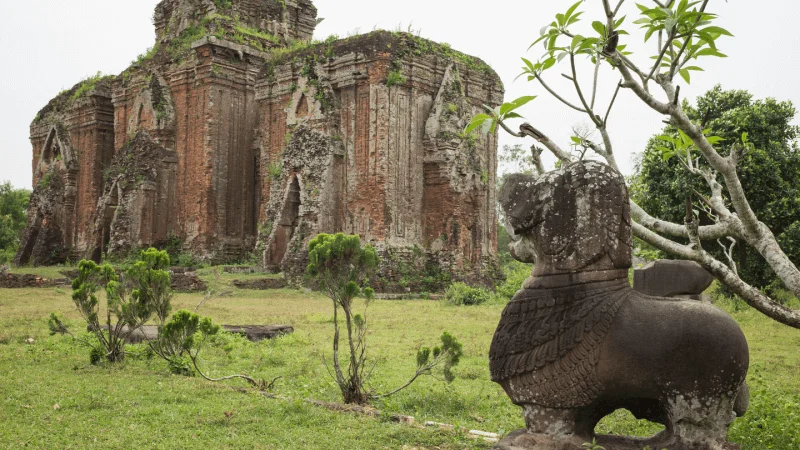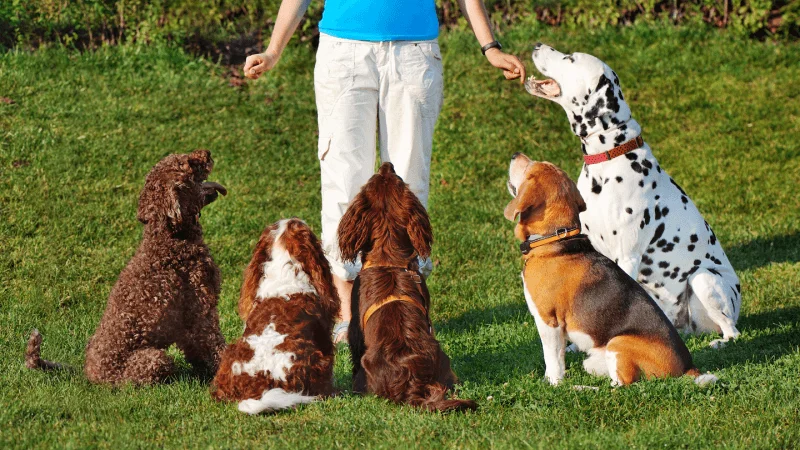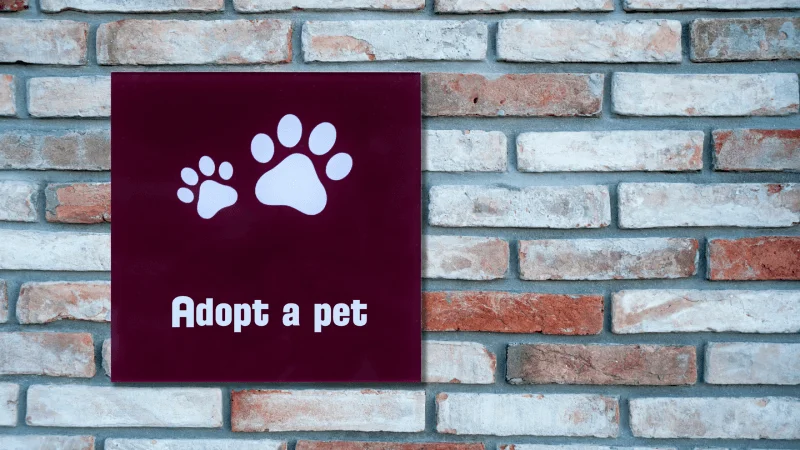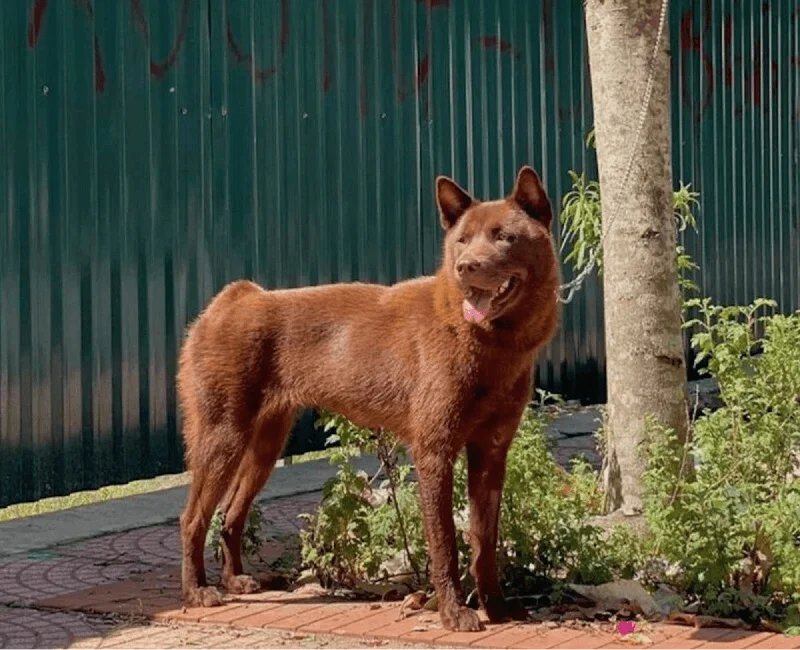The Vietnamese Hmong dog is a fascinating breed with deep historical roots. Originating from the mountainous regions of Vietnam, these dogs have been loyal companions to the Hmong people for generations. Known for their intelligence, agility, and strength, these dogs were traditionally used for hunting and herding livestock. Their ability to navigate rough terrains made them indispensable in helping families move their herds through the challenging landscapes of northern Vietnam.

Cultural Significance and Symbolism
In Hmong culture, these dogs are more than just pets. They’re part of the family, often seen as protectors and symbols of loyalty and strength. Their keen senses and strong bond with humans made them natural guardians, ensuring the safety of the household.
Today, the breed continues to hold cultural significance, often participating in local festivals and traditional ceremonies. As modern homes around the world begin to embrace this unique breed, the Hmong dog still embodies its rich heritage, weaving a tapestry of cultural roots and contemporary living.
They offer companionship rooted in generations of tradition, making them a unique addition to any home.
In the Hmong community, dogs hold a significant place in their culture and traditions. These loyal companions are seen as symbols of strength and guardianship.
For the Hmong people, these dogs are not just animals; they’re protectors, keeping families safe from dangers in their mountain homes. Their spiritual role is evident during celebrations and rituals, where they’re honored for their courage and loyalty.

Historically, the Hmong dog has played an essential part in various cultural events. They often feature in local festivals, where their agility and intelligence are celebrated.
They’re seen as a connection between the physical world and the spiritual realm, bridging traditions through their presence. This deep bond between the Hmong people and their dogs highlights the rich tapestry of shared experiences and mutual respect.
In modern Vietnamese homes, particularly in Hmong households, these dogs continue to be cherished for their cultural value. They remind families of their heritage and the enduring relationships built over generations.
As the global interest in Hmong dogs grows, people worldwide are beginning to appreciate this unique connection.
They symbolize more than just a pet; they represent a living piece of Hmong culture, rooting modern lives in ancient traditions. It’s this blend of the past and the present that makes them so captivating.
Adoption and Rescue Options for the Hmong Dog
Finding a Hmong dog for adoption or rescue offers a meaningful way to welcome this unique breed into your home. These dogs can often be found in breed-specific rescue centers.
Throughout Southeast Asia, local rescue organizations and shelters may have Hmong dogs waiting for a loving family. Doing some research online can help you find these places.
Many of these shelters provide detailed profiles for each dog, so you can learn more about their background and personality before you visit.
If you’re in Vietnam, visiting local communities or shelters can provide more direct access to Hmong dogs. Connecting with villagers or local breeders can offer insights into where you might find an available dog.
In recent years, animal rescues in Vietnam have become more popular, focusing on ethically treating these dogs. These organizations often work to find suitable homes for Hmong dogs and ensure their well-being.

For those living outside of Vietnam, some international adoption agencies work with local rescues to find homes abroad for Hmong dogs.
The International Pet and Animal Transportation Association can help guide the logistics of bringing a Hmong dog into your country. Remember, adopting a dog from abroad requires patience and preparation, as the process might take some time.
Adopting a Hmong dog not only brings a loyal friend into your life but also participates in preserving an important cultural heritage.
By choosing adoption over buying, you’re supporting rescue efforts and giving these dogs a second chance at a happy life. Whether through a local rescue or an international agency, there are many options to find a Hmong dog that matches your lifestyle and companionship needs.
Bringing a Vietnamese Hmong dog into a household with other pets might feel like a big step, but it doesn’t have to be difficult.
These dogs have a gentle nature but can be quite protective. That’s why it’s essential to introduce them slowly to their new furry family members. Start by letting them sniff each other from a distance. This gives them time to get familiar with each other’s scent without feeling overwhelmed.
Behavior with Other Pets in Multi-Pet Households
Keep an eye on their body language. If your Hmong dog seems relaxed, you can gradually let them spend more time together. Always supervise their interactions, especially in the beginning.
Set the tone for a friendly get-together by keeping it calm and patient. Remember, every animal might react differently, so it’s important to be attentive to their needs.
Feed your pets separately to avoid any food-related disagreements. Giving each pet their own space helps them feel secure.
Over time, they’ll start to see each other as part of the family, not as rivals. Encouragement and praise go a long way in making them feel accepted and loved.
With a bit of patience and routine, Hmong dogs can become great companions for other pets. Their loyalty and friendliness shine through once they feel at home.
While every multi-pet household has its challenges, the reward of a happy, harmonious pet family is well worth the effort. Enjoy the journey and each little step towards building a peaceful, happy home!

Finding a Vietnamese Hmong dog outside Vietnam might seem tricky at first, but it’s not impossible. As interest in these unique dogs grows, more breeders outside of Vietnam have started to offer them.
In countries like the United States, Canada, and some parts of Europe, dedicated breeders are working to provide healthy and well-socialized Hmong dogs to new owners. It’s always a good idea to look for a breeder with a solid reputation and who focuses on maintaining the breed’s unique qualities.
When searching for a breeder, it’s important to check their credentials and experience with Hmong dogs. A reputable breeder will be transparent about their dogs’ lineage and health.
They will also welcome any questions you might have about the breed and the specific puppies they have available. Building a relationship with the breeder can be helpful as they can offer guidance on caring for your new Hmong dog, ensuring a smooth transition into your home.
International Adoption Agencies
Another option to consider is international adoption agencies that work to connect Hmong dogs from Vietnam with families worldwide. These agencies usually collaborate with local Vietnamese shelters to find suitable homes abroad for these dogs.
The process might take a little time and patience, but it can be incredibly rewarding. When working with an agency, make sure to ask about the logistics involved in bringing a Hmong dog to your country, including vaccinations, health checks, and travel arrangements.

It’s essential to be willing to wait and prepare for your new friend’s arrival. Despite the challenges, these efforts ensure you welcome a healthy and happy pet into your home.
Whether you choose a local breeder or an international adoption agency, the joy and companionship a Vietnamese Hmong dog can bring are well worth the journey. With their rich cultural heritage and undeniable charm, these dogs make a fascinating and loving addition to families worldwide.
Training Guides for Hmong Dogs: Tips and Techniques
Training a Hmong dog can be a fun and rewarding experience. Start with basic obedience commands like “sit,” “stay,” and “come.” Use treats and plenty of praise to encourage your dog. Keep training sessions short, around 10-15 minutes, to match their attention span.
Socializing your Hmong dog is also essential, especially if you plan to have other pets or frequent visitors.
Introduce them to new people and animals gradually. Take them on regular walks to different places. This helps them become comfortable in various environments and situations.
Patience is key during training. Hmong dogs are smart and eager to learn but may take some time to master new commands.
Stay consistent with your training methods and try to maintain a calm and positive attitude. If you get frustrated, take a break and try again later.

Remember, training is not just about commands. It’s a bonding process that builds trust between you and your dog.
So, be patient, keep it fun, and enjoy the journey together. Soon enough, your Hmong dog will become a well-mannered family member who enriches your home with its rich cultural heritage.
Welcoming a Hmong dog into your home is a unique experience, filled with heartwarming moments. Owners often describe their Hmong dogs as fiercely loyal companions, always eager to protect and comfort.
Minh, an owner from California, shares how his Hmong dog, Mei, quickly became a vital part of his family. “Mei is not just a pet; she’s our guardian at home, always looking out for us,” Minh says. He loves how Mei’s natural instincts to protect shine through every day.
For many, the bond with their Hmong dog deepens with each shared experience. Sarah from Australia tells a story about her Hmong dog, Bao, and his unexpected talent for entertaining.
“Bao does the cutest little dances when he’s excited,” she chuckles. Bao’s playful antics have not only filled Sarah’s life with joy but also strengthened their bond. His charm and personality have even made him a favorite at local dog meetups.
Each of these stories from Hmong dog owners reveals a special friendship built on trust and shared journeys.
These dogs enrich lives, weaving cultural significance with everyday joy, creating memorable moments that owners cherish.
Basic Physical Characteristics: An Overview
The Vietnamese Hmong dog is known for its striking physical characteristics. These medium-sized dogs have a strong and athletic build, which helps them navigate rough terrains with ease. Their dense, water-resistant coats can come in a variety of colors, typically featuring shades of gray, black, or brown. This coat not only serves as protection in the mountainous climate of their native Vietnam but also makes them quite eye-catching.

One of the most unique features of the Hmong dog is its curly tail, proudly curled over the back, adding to its distinctive appearance. Their expressive eyes often display a mixture of intelligence and curiosity, hinting at their alertness and keen senses.
With powerful legs and agile bodies, these dogs are well-equipped for an active lifestyle. Their physical traits aren’t just for show; they highlight the practicality that has helped them thrive as loyal companions in the Hmong communities for generations.
Basic Care Needs for the Hmong Dog
The Vietnamese Hmong dog has some basic care needs to keep them healthy and happy. First, make sure they have a balanced diet. High-quality dog food, with the right balance of proteins, fats, and carbohydrates, is key.
Don’t forget about fresh water; they need it daily. Exercise is another must-have. These energetic dogs love exploring and need regular walks or playtime to burn off energy.

Grooming your Hmong dog helps keep their coat looking its best. Brush them a few times a week to manage shedding and keep their thick coat healthy.
Regular baths will also keep them clean and their skin in good condition. Finally, routine vet visits are essential to check their health and keep vaccinations up to date.
By meeting these basic care needs, you’ll help your Hmong dog thrive as a beloved family member, bringing joy and companionship to your home.
Conclusion and Final Thoughts
The Vietnamese Hmong dog is more than just a pet; it embodies a vibrant piece of cultural heritage. With a history of loyalty and courage, these dogs make remarkable companions in modern homes.
They offer a unique blend of tradition and love that enriches families worldwide. Owning a Hmong dog means embracing a responsibility of care and cultural appreciation.
As you welcome this fascinating breed into your life, remember to honor their heritage and provide the love and protection they deserve. Embrace the Hmong dog’s story, and let it become a cherished part of your own.
